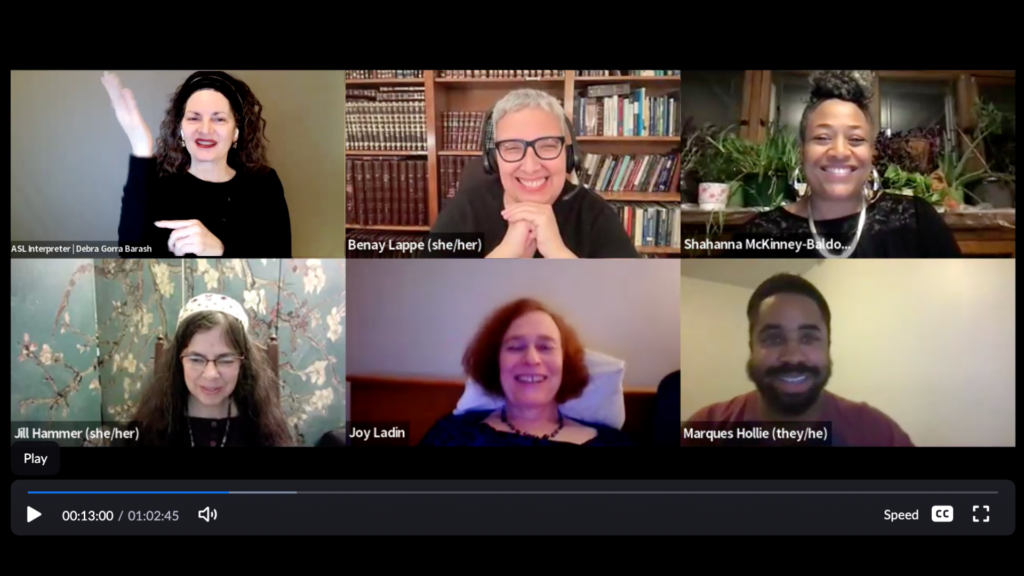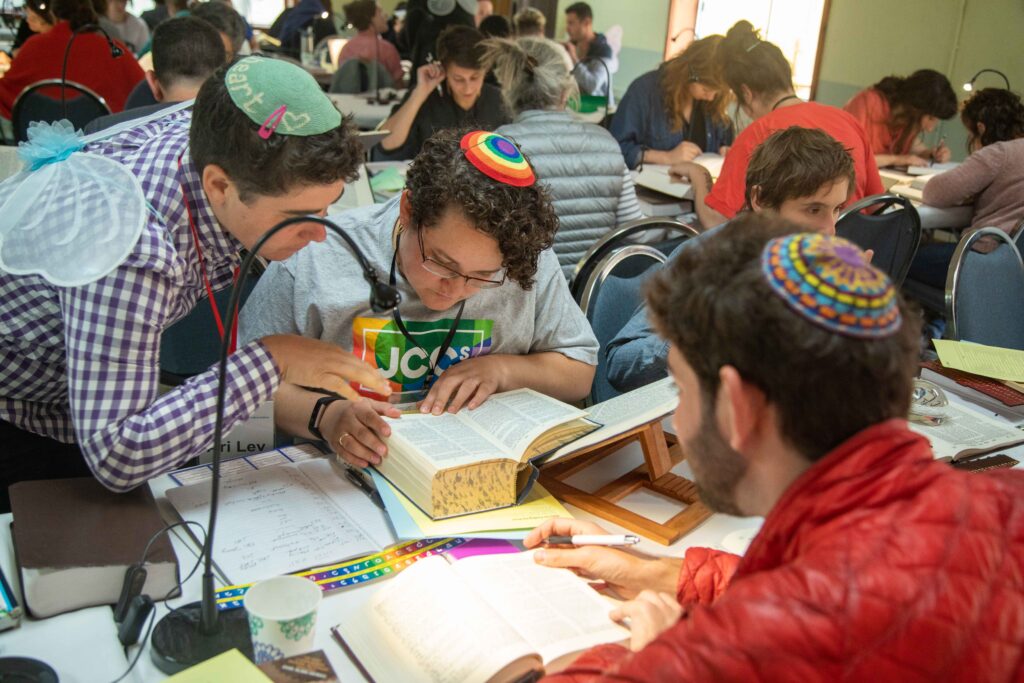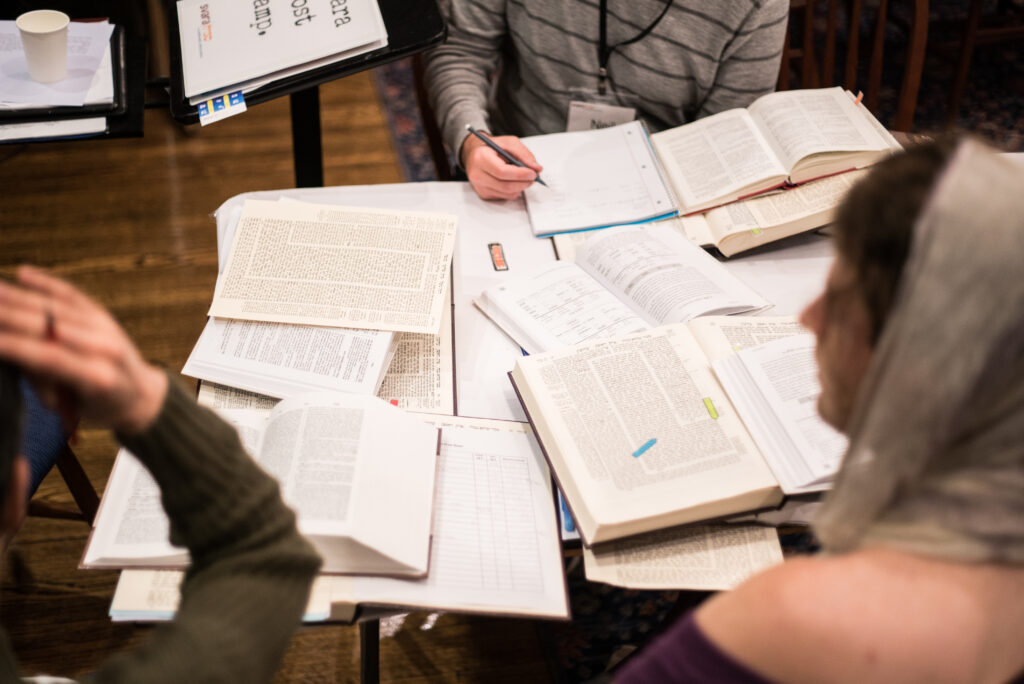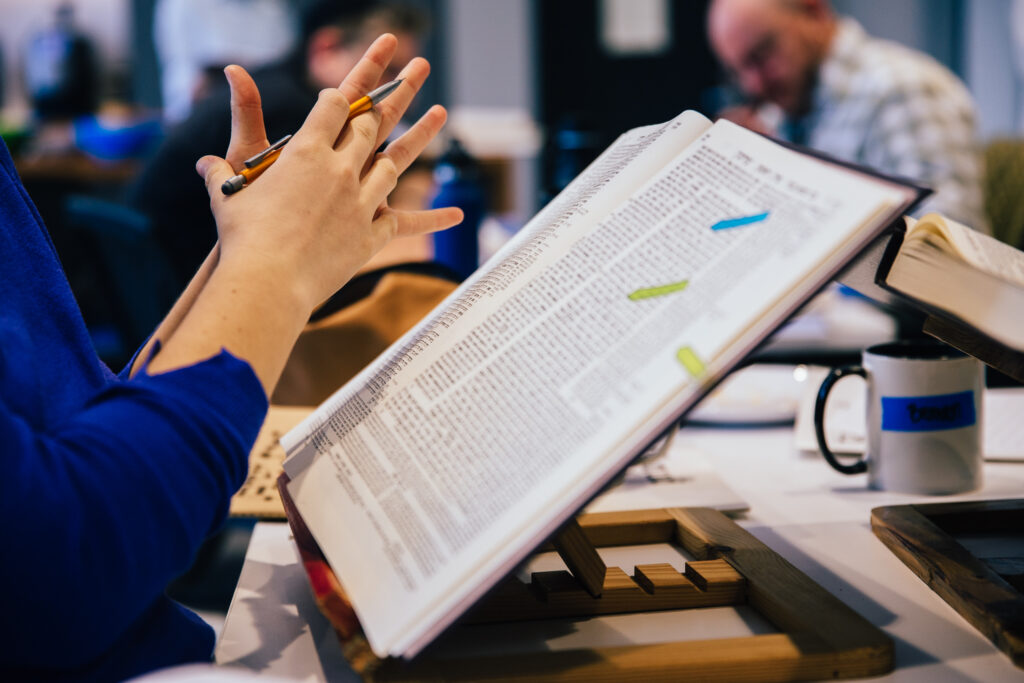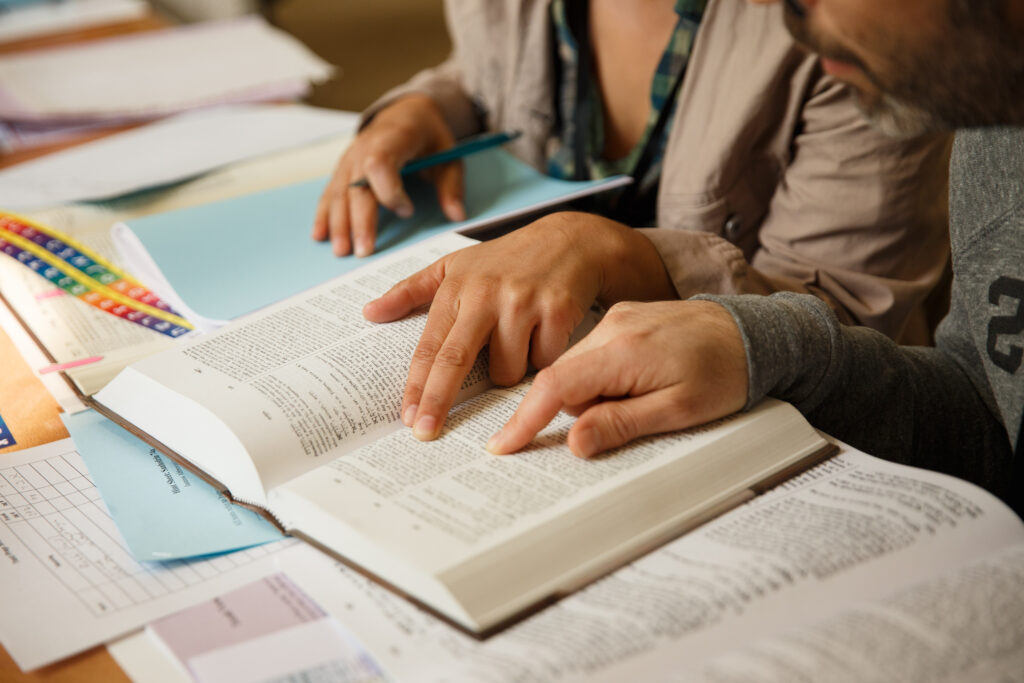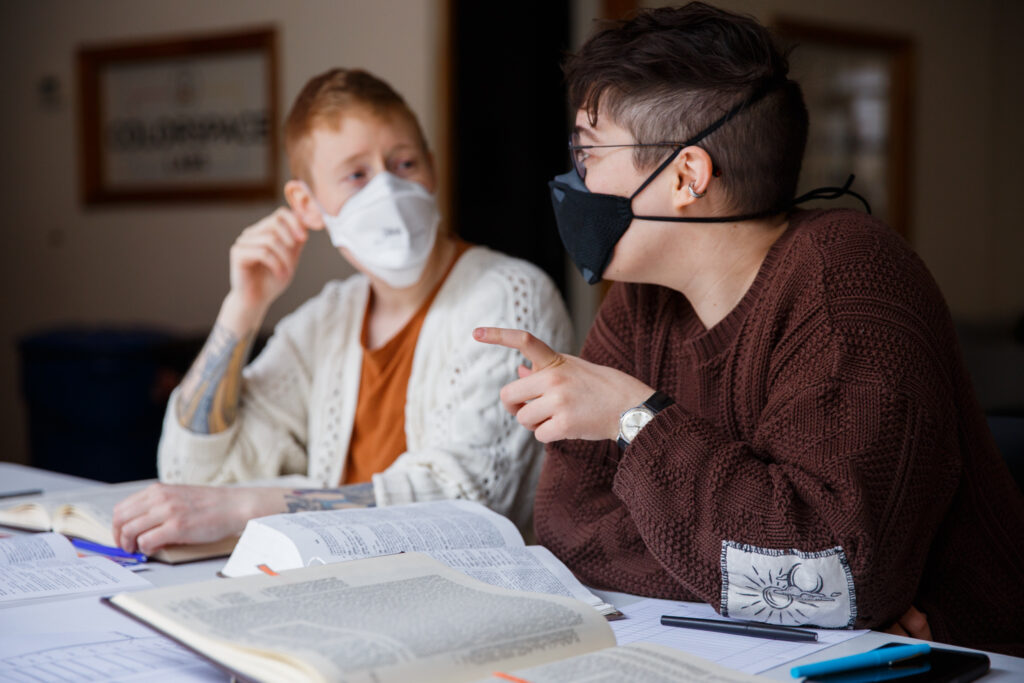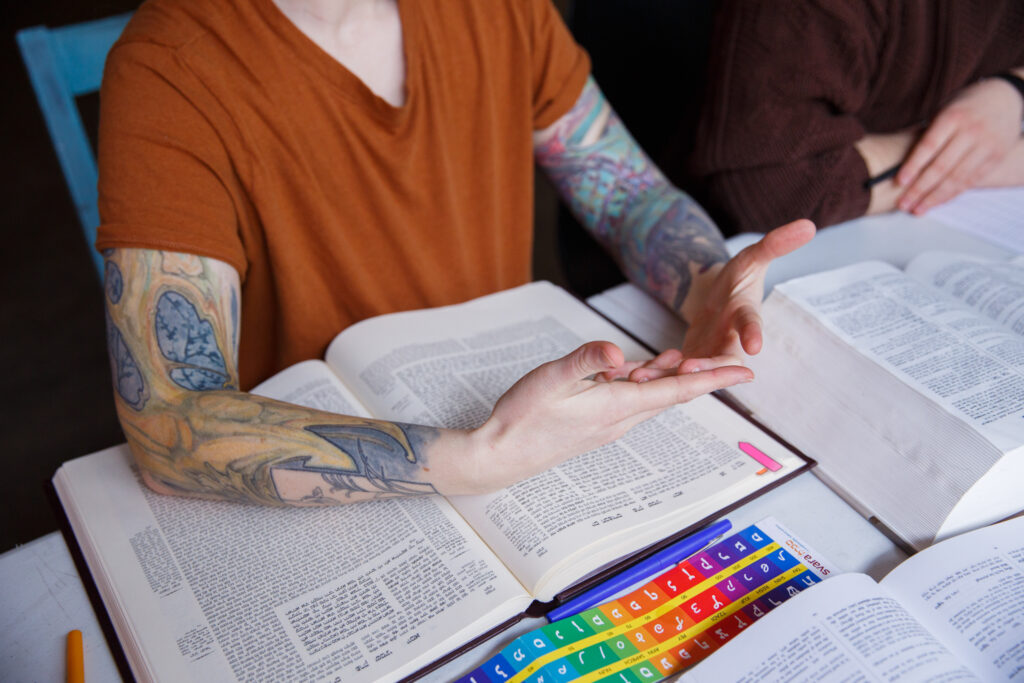This week we welcomed the very first installment of The Unrecognizable Jewish Future, a four-part conversation series designed to explore the evolving role of Judaism in our lives through thought-provoking conversations with leading thinkers, teachers, and learners. Together we gathered virtually with more than a hundred members of the SVARA community to bear witness to the insight, wisdom, and reflections of our very first panel of speakers for a discussion titled “Reading Ourselves Into History.” Our speakers – Rabbi Benay Lappe, Rabbi Jill Hammer, PhD, Joy Ladin, and Shahanna McKinney-Baldon – gave powerful voice to their own experiences of living through some of the crashes that have changed our tradition, and offered hope for the shifts already in the making. As we head toward the second installment of the series, “Creating New Precedents,” we wanted to share a short collection of some of the profound insight from this week’s dialogue. It is a tremendous blessing to be together with you all in community and in conversation, and we hope you’ll join us for the next event on Sunday, February 4th.
Rabbi Benay Lappe: When I began to think about CRASH Theory twenty-five or thirty years ago, “Option 3” was something that I thought existed only in individuals. Like all of us here. In my own Option 3-ness, I didn’t see myself as part of something to come. I thought of myself as an outsider, a freak, as being weird. And as the years went on, I began to talk about Option 3 as this place of suffering, because I was suffering. Option 3 was the place where you were going to get threatened or fired. It was worrying your ordination might be taken away, or getting slurred in the media. The list goes on, but these were the things that were happening to me. And because of this, I used to talk about Option 3 as being (to be honest) a pain in the ass. It was heartache. It was trials. And that’s just what I thought it was going to be. I resigned myself to thinking, “tough luck for all of us born at this time.” But I no longer say that, and I think that’s because we’ve all turned our Option 3s into something real. Institutions and organizations and communities. We have turned our Option 3s into landing pads for folks to imagine with us and join us when they themselves crash. What’s different now is that Judaism is no longer a take it or leave it proposition the way it was when I was growing up. Now it feels more like, “take it, leave it, or join the fun of what we’re up to.” As all of you have said, what we have in common in all of these Option 3s that are coming about is a centering of the insight of the folks who were never centered. Together we’re creating a new center. I believe folks will look back on this time as the era of explosive access to the tradition. And I think my charge to all of us is to always, always keep our eye on who’s still not here.
As a queer woman, I felt I was the beneficiary of feminisms that taught me how to feel okay about myself even though the world would have had it otherwise. And as the beneficiary of gay, queer, and trans liberation movements, I also learned the skills of valuing that inner voice in spite of what the world was telling me. A voice which I later learned—when I opened the Talmud for the first time—has a Jewish name and is valued in the tradition, and it’s called svara. And SVARA the yeshiva is a queer yeshiva in the broadest sense. Queer not only with respect to gender and sexuality, but in terms of all marginalized experiences. Because I think that’s where the biggest change is going to emerge from. The folks who are already well-versed in finding and, most importantly, valuing their inner translations. The folks who can identify what’s broken and what needs fixing because we know it with our bodies. Because we’ve been in the crumble for so long. I think it’s this life experience which has given us the skills and the confidence to bring ourselves forward with strength.
Rabbi Jill Hammer, Phd: Developing our own language happens when we have a sense of both the rightness and wrongness of the language we’ve been given. In my case, there was both an attraction to the spiritual tradition I received alongside this feeling of “this doesn’t fully include me and that’s hard.” I find that tension has the ability to produce a potent creative response. Some of it is observing what is going on within us as a reaction to the tradition we have received, and that’s one thing I want to share: it is necessary to be willing to listen to that reaction, to your own voice, and to respond to your own awareness of what’s going on inside you.
The other thing for me has always been about widening the lens. One example is the dialogue about what equals sacred text, what equals tradition, and what equals ritual. There are these languages that say, “this is sacred text and, conversely, this is folklore and magic, which are forbidden.” And when you start to deconstruct that language and notice that what may feel sacred to you sits beyond the lens that you have been given, you have to widen that lens. Only then do you begin to understand that you haven’t been given a whole body of work – you’ve been given a piece of the body. And the other stuff, the stuff that speaks to you, wasn’t necessarily given to you. Only then is there the possibility of drawing on a wider variety of material. Queer Jewish poetry from Spain. Jewish magic from North Africa and Eastern Europe. You begin to see that all of it belongs. We don’t have to be limited by what we have been told is the core of a tradition. And for me, that’s where it all starts. Once you begin to widen that lens, more creative things can happen.
I also want to say something about the inclusion of the more-than-human world in Jewish thought and practice. One of the things that has given me the most hope for the future is an increasing sense that the planet and the other beings we live with are an important focus of Jewish theology, law, practice, and ritual. This has brought about the recovery of traditions that exist in deep relationship with the earth and other beings. And one of the things that goes along with that is a different relationship to the body. Because when we pay attention to the physical world as a sacred entity, then we also come to pay more attention to the body as a sacred entity, instead of shoving it off as an unimportant part of us. To bring that piece of us in as important and in connection to life feels absolutely essential to me, and I have really seen it happen in so many different corners of the Jewish world over the last 30 years. I think it is in response to a crash, one that’s been a long time coming.
Joy Ladin: I wanted to build on a couple of the things that Jill said. Being able to see myself in a tradition that was clearly not designed for me was made possible by three things. One I attribute to Jill, who gave me this language: it was the experience of growing up as a feral Jew, not knowing I was outside of everything. Some of us were socialized into a form of Judaism that we could more or less fit into, which enabled us to feel close to family, close to community. It gave us a sense of belonging. And because of that, the stakes were quite high to think outside of it, or to question it. But as Jill was saying, we have to listen to what feels and sounds right. When you start to do that, you risk losing that sense of connection and belonging. At the same time, if you grew up like I did, feeling like I didn’t belong at all, that act of questioning comes with an enormous sense of freedom. A great loneliness, but a tremendous sense of freedom. I felt free to create a Judaism that met my personal needs which was perhaps a childish and narcissistic thing to do, but it’s also what I think everybody should do. Because if we don’t do that, we won’t have a Judaism that meets our needs.
Secondly, the part of Judaism that was most accessible to me was reading the Torah. If you read the Torah, by the second verse I’m pretty sure you’ll see it’s clearly not designed for any contemporary American Jew. Whoever this is written for, it’s clearly not you. It’s very strange. It’s old and weird. I think one of the great things about re-reading this very strange set of texts over and over (which don’t get less strange as you read them) is that they constantly challenge us with our own strangeness. They challenge us to see ourselves in these stories that were not written for us. When these texts were created, we were the unrecognizable Jewish future. I think it’s built into the cycle of Torah reading, this kind of textual estrangement, which summons us to respond to it with what we need. That’s where new language and possibilities come from.
For me, the third part was an experience of god as a living presence, which exists in the ancient text but was not present in the forms of Judaism I was familiar with. And the idea that you yourself could have a living experience of this stuff. It’s not just tradition, it’s not just story, it’s not just philosophy, or ideas that you kick around. It can be in your own life. Here I encourage people to do the phenomenological equivalent of Jill’s lens widening. Don’t just take the good stuff. Take all the stuff. The discomfort of spiritual experience, the sense of estrangement from god and tradition. This is all part of the actual lived experience of Jewish tradition. It’s part of claiming the Judaism happening in me and through me.
Shahanna McKinney-Baldon: This conversation is giving me new insight into my own experience as a person with multiple heritages with multiple generational crashes overlapping; crashes that interact with each other even though they didn’t necessarily happen at the same time. My family’s story is the story of African Americans and the story of Jewish Americans who came from Europe. My parents were an interracial couple who got married before the Loving decision. They got married in Wisconsin and it was legal in Wisconsin, but in other states it was illegal for them to be married. And I got skills, language, and inspiration from my parents. I got skills, language, and inspiration to navigate racism from my white mother, actually. I have gotten so much from watching and emulating others. I have gotten so much inspiration from other Black American Jewish leaders, but also leaders from other marginalized groups and identities. I’ve tried to emulate that determination of all of the leaders who are here tonight. Not feeling alone is something I’m working on a lot. Trying to get myself not to act alone—or not act like I feel alone—has been a big area of growth for me over many years and I’m starting to figure a few things out about that. But I’ve gotten that from watching others, and listening to others. I got the message from my mother and from other role models. I got the message from you, Rabbi Benay, that there isn’t a problem with God or a problem with the Torah or with the tradition. It’s people and their interpretation of it all that’s problematic. When I was growing up in an Orthodox school, it was a different time. It was a time when Milwaukee had one Jewish day school and we were all together, which is a very important part of my foundation. I grew up in this very diverse Jewish milieu. And I wonder, how are we going to reach for that, for the generations to come? How are we going to provide that for our children? My children have not had access to that. They’ve had access to other types of Jewish diversity, to my rabbi, Rabbi Laurie Zimmerman, who has modeled living your values in a way that I didn’t see growing up. But how are we going to reclaim our historic diversity in service of the unforeseeable future?
I want to say one last piece about heritage. I think a lot of what’s being achieved here is really going back to the old ways. SVARA is training traditional radicals, and with that in mind I want to say Sankofa. Sankofa. Sankofa is a West African Adinkra symbol. A symbol that is a metaphor for an idea. Sankofa literally means “go back and get it.” It’s a picture of a bird with an egg in its mouth looking back as it’s moving into the future. You have to know where you’re coming from to know where you’re going. To me this is an important idea as we’re thinking about Crash theory and thinking about going back to the old ways to move into the unimaginable Jewish future.
_________
SVARA is committed to providing inclusive, accessible learning and is thrilled to offer The Unrecognizable Jewish Future as a free series for all. The series does however have real costs, such as paying our tech, captioning and ASL interpretation team. If you feel moved to help support this important work, you can make a tax-free donation today. If your organization is interested in being a sponsor of this series, email Elli Krandel to learn more.

